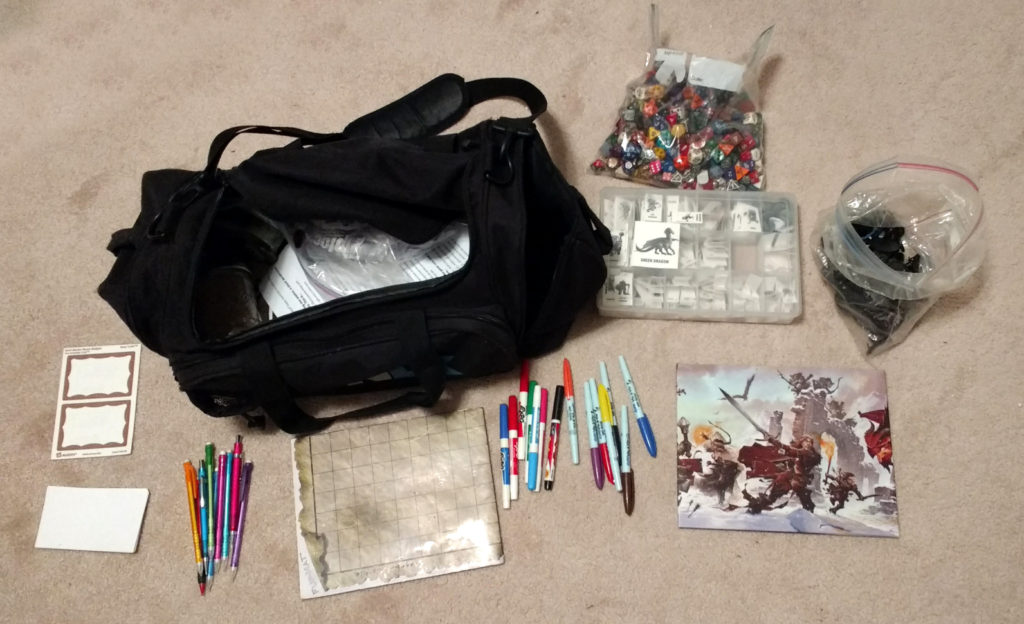In a previous post, I described the utility of having a Unified GM Bag: all your materials in one place.
Here’s everything in my bag, with explanations:
A bag of dice. My players haven’t yet figured out that they can buy their own dice, and besides, folks sometimes lose dice and it’s handy to have spares.
At least half a dozen pencils. Players often forget to bring pencils, and even if they do, it’s useful to have spares in case one or two breaks.
Erasable battle maps, with a 1-inch grid on one side and hexes on the other. Even in games that don’t use miniatures, these are very useful for drawing out rough maps, marking down information, etc. Much as I love the theater of the mind, my players tell me that a 15-second sketch of a location can save many minutes of confusion. I keep two Pathfinder Flip-Mats in my bag.
Wet erase and dry erase markers. If I know what I’ll be running, I draw that onto the mat with wet-erase markers ahead of time, so they don’t smudge. I use dry-erase markers during the game for anything that can change positions (especially doors).
Glass beads. I use these clear red “stones” whenever I need Fate Points, tokens, or other counters. Their red color makes them very visible on a crowded table.
Paper miniatures with about 20 plastic stands. I printed several hundred minis from Paper Friends, with a wide variety of monsters, villagers, adventurers, etc. I actually 3D printed the plastic stands, but you can either make your own with binder clips, or use them as triangular, foldable minis.
A GM screen, in this case a D&D 4E screen into which I’ve pasted D&D 5E sheets. I don’t always use a GM screen, but it’s often useful.
Blank paper, 5-10 sheets. Great for impromptu handouts, as “fog of war” to cover a map, or as scribbling notes on.
Index cards, for notes that I can pass easily to players.
Name tags. This is incredibly useful for convention games, where you’re probably not going to remember every character name. Hand out name tags and ask each player to write his or her character name on the name tag, and put it on. Now you can address everyone by character name! I tried doing this with little stands on the table, but they’re never oriented so that everyone can see the stand, or they get blocked by other things on the table.
A 30-second sand timer (not pictured). I mostly use this with groups that are slow to make decisions; I give them each 30 seconds to decide what to do in combat.
One adventure (not pictured). I printed out a basic adventure that I can pull out if the PCs go completely off the reservation (an abandoned temple overrun with monsters).
In addition to all this, before each game, I place my binder of campaign notes and the core rule book into the bag. Now I’m ready for just about anything!

![[Atom feed]](/user/themes/geek-archaeology/images/atom-feed.png)
![[RSS feed]](/user/themes/geek-archaeology/images/rss-feed.png)
![[iTunes podcast feed]](/user/themes/geek-archaeology/images/itunes-feed.png)